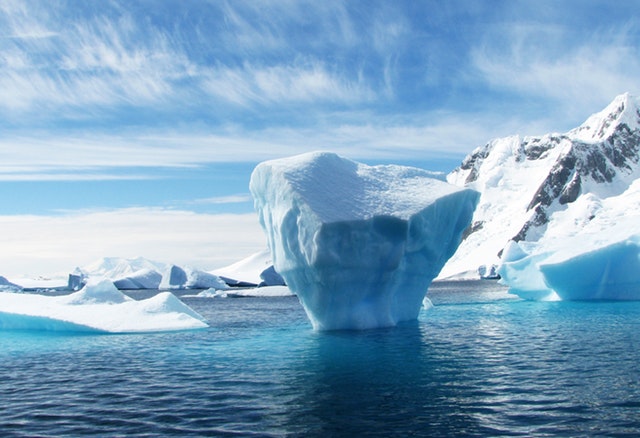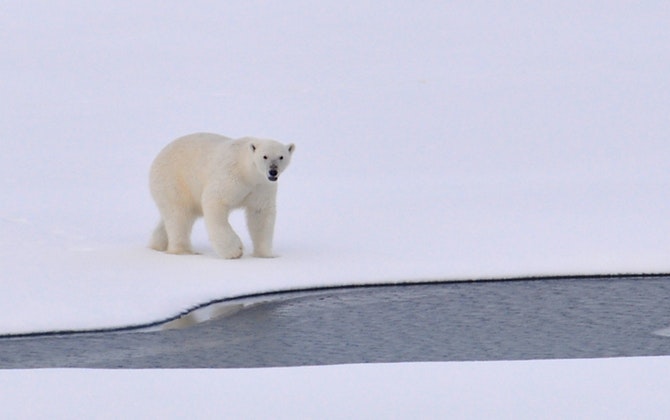 When scientists talk about global temperatures increasing by 4°C, what does that really mean? To some people, 4°C doesn’t sound like a whole lot. In fact, some may think that this would make certain cold areas more pleasant. If you’re dealing with freezing winters and you’d rather not dig your car out of the snow every few days, the weather being a little warmer seems like it would actually benefit you, right?
When scientists talk about global temperatures increasing by 4°C, what does that really mean? To some people, 4°C doesn’t sound like a whole lot. In fact, some may think that this would make certain cold areas more pleasant. If you’re dealing with freezing winters and you’d rather not dig your car out of the snow every few days, the weather being a little warmer seems like it would actually benefit you, right?
When we’re talking about a 4°C difference in weather, it’s not a big issue. But when we’re talking about a 4°C difference as it pertains to the global temperature, well, it’s a whole different story. Most of us have no conception of how drastically it would actually change the regions where we live. And when we hear these predictions, it seems so far off—how much do we really have to worry about now, anyway? If the planet won’t even be that warm until, say, 2100, does it really matter to us?
Unfortunately, these changes are happening much faster than anyone expected. And when we look at how these vulnerable regions of the world are changing, we get a sneak preview of our possible future—and it’s not looking so good.
Welcome to Svalbard, Norway, home to the fastest-heating town on the planet. Officially the northernmost settlement on Earth, Longyearbyen is a relatively small town of 2,300 people, who have learned to be hardy and adaptable in the face of harsh weather conditions. But there is a certain draw to living somewhere so remote—and so beautiful. The Arctic is tough, but for some, dealing with the climate there is worth it. And if you’ve ever seen the Northern Lights dancing above you on a cold, clear night near the North Pole, you’ll probably understand exactly why this town is such a special place for so many.
But life in Longyearbyen is changing, and not for the better. Average temperatures in Longyearbyen have gone up 4°C since 1971. Average winter temperatures have risen even more—there’s an astonishing 7°C difference. And researchers say that average temperatures in Longyearbyen could officially hit a 10°C increase by 2100. It sounds unbelievable, but when you look at the changes that have already occurred, it’s probably a fairly realistic prediction.
How has this 4°C rise actually affected Longyearbyen? The area used to be known as an “Arctic desert,” meaning that it didn’t rain in the winter—but with the warmer temperatures, rain isn’t so rare now. In 2015, heavy rainfall froze over and prevented snowfall on the mountains from sticking to the soil, causing an avalanche that killed two people and left eight hospitalized. The glaciers are receding, the permafrost is melting, and in 2017, the permafrost melt actually flooded the Global Seed Vault (also known as the “Doomsday Vault”), preserving over 1 million species of plant seeds for future generations.
It is now impossible to drive a snowmobile across the fjord, which no longer freezes. And nearly 10% of the townspeople have either lost their homes or permanently relocated. Imagine being told your house is in avalanche danger zone and moving to another place, only slightly safer and with no guarantee of stability. Imagine dog sledding fewer and fewer days in the snow, and increasingly in the muddy grass. In places like Longyearbyen, there’s no doubt that climate change is real—it’s simply impossible to ignore it.
For places like Longyearbyen, it may be too late to stop the worst effects of climate change. No one knows exactly what the future holds, and this certainly isn’t an excuse to give up, but it should serve as a warning to those of us living in places that have yet to suffer serious effects from climate change.

But one of the most important lessons that people can take from what’s happening in Svalbard? 4°C is a dramatic rise with serious consequences. No, it is not the difference between a day when you’d like to lay out and get a tan and a day when you’d rather stay inside with the AC on. It’s not the difference between choosing to wear jeans or throwing on a sundress to stay cool. When we’re talking about a 4°C difference in the temperature between one day and the next, it’s not a big deal. But when we’re talking about an average rise of 4°C in temperature across our entire planet in the long term, the changes it could bring about would result in a world very unlike the one we know today. Society as we know it would not be able to function.
And yes, it may sound alarmist, but if we’re going to raise the alarm, we need to do it now. When regions like Svalbard are already changing so drastically, we cannot afford to keep stalling. If we do, it’s only a matter of time before the rest of us experience what life is like when the planet is for 4°C warmer. Communities like Longyearbyen can’t afford to wait any longer, and now is the time to act.
__
Photo: Pexels




